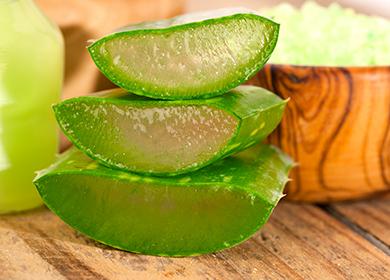The content of the article
The healing properties and contraindications of aloe vera were first formulated by ancient Greek healers. The first written mentions of a medicinal crop date back to the third millennium BC. During this time, the plant not only did not reduce the area of growth, but also switched from the category of wild-growing to widely cultivated at home.
There are several theories of the origin of the name of the plant. One at a time, it came from the Greek word “salt” due to the fact that the taste of the juice of the culture resembles salty sea water. According to another version, it is associated with the Latin word Alo? and translated means "bitter." In Russia, the name agave or centenary tree is more common. It is not associated with the period of a culture’s life, but rather, indicates its extremely high therapeutic effect.
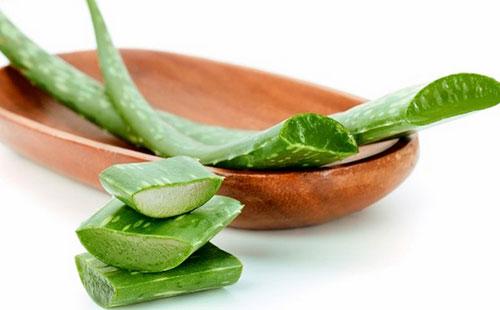
Features of aloe tree with photo
What does aloe look like and what does it treat? The plant is a group of evergreen shrubs or small trees. According to the modern classification, it is assigned to the Ksantorreev family, whereas before it belonged to the Lilein and Asphodelov families.
In total, the group includes at least five hundred related cultures.
- Aloe spinous. Homeland is the region of Lesotho, South African Republic.
- Aloe present or faith. It grows wild in the Canary Islands, distributed due to cultivation in northern Africa and the Arabian Peninsula.
- Aloe Barbados. In the natural environment grows up to three to five meters in height. It is found in southern Africa in the Finboshi regions - green areas where Mediterranean cultures grow in large numbers.
Aloe tree is the closest relative and outwardly very similar plant to them. Most often it is grown in our country. This is due to the maximum unpretentiousness that culture demonstrates. And also with the fact that it began to be cultivated on an industrial scale in the USSR. The plant included in the State Pharmacopoeia was grown on the first organized plantations in Georgia, near the town of Kobuleti with a humid subtropical climate.

Description
In the wild, aloe tree-like reaches a height of five meters, and the thickness of its trunk is often thirty centimeters in diameter. In our country, such giants can not be found. Home-cultivated plants rarely grow up to eighty centimeters.
They have a fibrous, highly branched rhizome of gray color with an orange tint. Thanks to the developed root system, they are able to absorb moisture from large soil surfaces. The stalk is erect, often branches, forming lateral shoots.
Leaves allow you to accurately determine the agave visually. They are thick, fleshy, with characteristic denticles along the edge, matte and with a deep greenish-blue tint. In the upper part they are concave, in the lower part they are convex, in length they can grow up to sixty centimeters, but usually do not exceed thirty. They are literally filled with juice when the plant receives abundant watering.
But if there is not enough water, they literally shrink, their tips become thin, when pressed, dents form, the surface of the sheets is dull. This is due to the fact that the culture closes the "flakes" on the surface of the sheets in order to reduce moisture loss. In such a form protected from external influences, the agave can survive a prolonged drought. After watering, it usually returns to its original healthy appearance.
Aloe blooms with spectacular hand inflorescences up to forty centimeters long. The brushes consist of small bluebells with drooping heads of bright orange color. At home, the culture almost never blooms and does not form fruits. In the natural environment of growth, once a year forms oblong-shaped box-fruits with numerous seeds of black-brown color inside, which serve for reproduction.
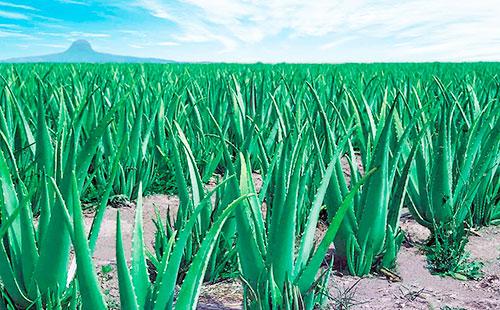
Geography and cultivation
The homeland of aloe is the southern regions of Africa. Thickets of culture are found in Mozambique, Malawi, the South African Republic, where it inhabits desert territories, rocky soils.
High drought tolerance and unpretentiousness helped it spread everywhere in the subtropical climate. In the presence of a constant source of moisture, the plant reaches its maximum height and acquires a branched “crown”.
In Russia, suitable growing conditions exist in the Krasnodar Territory, in the Crimea, in the southern part of the Caucasus. But organized plantations are small, and the raw materials are so "capricious" that the use of aloe at home requires planting it as a room flower.
In this version of cultivation, there are pros and cons. The advantage is that raw materials are always available, you don’t need to run after them “along the mountains and fields”. It is enough to pick a twig and prepare a medicine from aloe. And the disadvantage is the extremely limited growth of culture. In apartments and houses, the plant does not reach even a fifth of its growth, and the intensity of vegetation directly affects the composition of medicinal raw materials.
Therefore, when growing at home, it is recommended to periodically transplant the culture.
The plant is propagated by cuttings, since outside the natural places of growth it does not form seeds and fruits. Side shoots are cut, which are planted in a jar of water, and after the appearance of the roots - in the soil. Or use the tops propagated in a similar way. After rooting, the agave grows strong, powerful and healthy.

Collection and Harvesting
The healing properties of aloe vera are associated with its juice. When harvesting, it is he who is given the main attention. Harvest juice from fleshy, large leaves that break off from the bottom of the stem. The older the leaf, the more saturated the composition of its juice, therefore it is recommended to use sheets with a minimum age of three years, reaching a length of fifteen to eighteen centimeters.
But official medicine rarely uses old plants. On industrial plantations, a two-year growing cycle is practiced, during which the raw material is taken from two-year-old crops, and the remaining bushes “rejuvenate” - transplant the tops with small leaves to a new place. Therefore, scarlet in folk medicine can also be used in the form of young leaves that have reached an appropriate size.
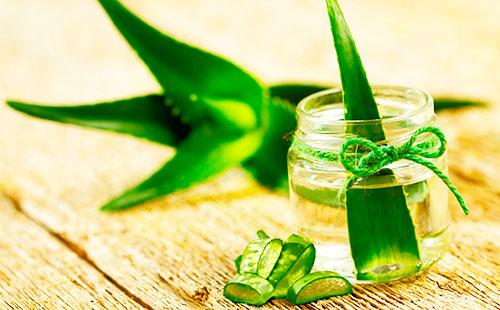
Composition and properties
All medicinal types of aloe contain aloeemodine substances, as well as antraglycosides: aloin, nataloin, rabarberon. Despite the long medical practice with the use of culture, its composition has not been fully studied, superficially. Productive results were obtained by a study of modern Russian scientists at the Institute of General and Experimental Biology, conducted and published in 2010.
According to new data, agave leaves contain:
- dominant malic acid organic acids;
- amino acids - a complex of twenty compounds;
- free carbohydrates represented by sucrose and glucose;
- pectin substances with astringent action.
Phenolic compounds, in particular, aloein, vanillic acid, esculletin, have been isolated. A number of phenolic substances were isolated for the first time in the composition of the plant. Their presence in medicinal raw materials is a controversial moment, which forced doctors to revise the beneficial properties of aloe and to adjust the possibilities of its use.
The medicinal effect of plant juice is multifaceted.
- Bactericidal. Suppresses pathogenic microflora, effectively inhibits the reproduction of staphylococcus, streptococcus, intestinal, dysenteric rods. The healing properties of aloe are manifested with external and internal use as a wound healing agent for local injuries, inflammatory processes.
- Laxative, antispasmodic. It is provided by the presence of anti-inflammatory compounds, tarry substances and pectins that stabilize the gastrointestinal tract, improve intestinal function.
In 2011, the specialists of the American Toxicological Program published the results of a study that took place over two years. During the entire period, the experimental animals were given undiluted juice of a medicinal plant, an extract dissolved in water, or an aloe leaf with a peel. According to the results of the study, an autopsy was performed, which showed the presence of tumors of the esophagus and intestines in almost seventy-five percent of experimental animals.
The results of the study cast doubt on the benefits of aloe when used internally, for example, to treat stomach, constipation, or diabetes. The cause of the carcinogenic activity of the plant is called aloin, which is part of the culture. With local and external use, no health risks have been identified.
But it is important to consider that the plant has been used in large dosages and for a long time. Also used with peel, which is not used in the preparation of home remedies. However, the approach to the treatment of aloe should be balanced, given its carcinogenic risk.
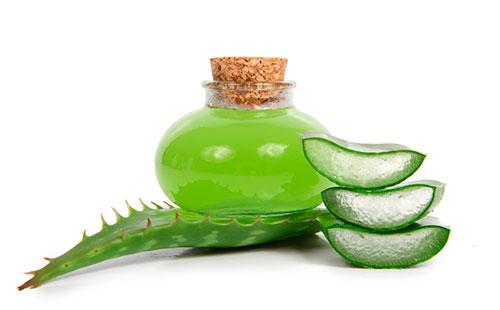
Aloe application
Use the plant as a medicinal in Russia has long been. Mention of it is in the directory of organic pharmacodynamics, published at the end of the nineteenth century by academician A. Sokolovsky.
The healing properties of aloe during the Second World War were widespread. The culture was used to heal wounds, including infected ones. And this practice gave a good result. It was concluded that the juice of the culture not only inhibits the development of pathogenic microflora, but also activates the reserves of the body and skin, contributing to its healing.
Later, the use of aloe in folk medicine was expanded. They began to use it to improve appetite, normalize the function of the gallbladder with pancreatitis and stimulate the production of bile. It revealed its tonic effect, increasing the intensity of blood circulation in the pelvic organs.
Significant results in the study of the action and application of aloe leaves were achieved by the famous Soviet academician V.P. Filatov. He first proposed the use of medicinal raw materials not immediately, but after short-term storage.
Agave in traditional medicine recipes is used in pure form or in combination with honey and fat. You can prepare the composition yourself, but if this is not possible, a pharmacy extract is also suitable. But it is important to remember that it is allowed to apply the extract only externally. In medicine, it is used for injection in diseases of the eyes, gastrointestinal tract, and genitourinary system.
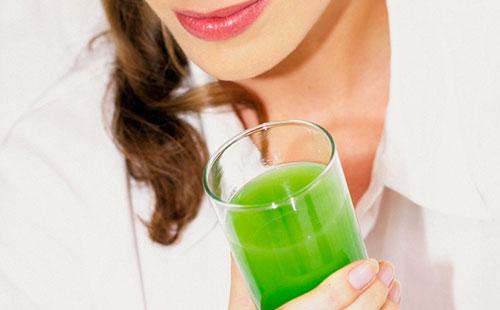
Fresh composition for oral administration
Used to treat constipation, as a choleretic, antispasmodic. From constipation take once at night, as the effect develops within nine to ten hours. To normalize biliary function, take two to three times during the day for a teaspoon half an hour before meals.
- Tear off a few large sheets.
- Rinse with boiled water, dry.
- Finely chop, wrap in gauze.
- Wring out with your hands.
Before use, prepare a fresh composition, as it quickly oxidizes and loses its properties. Using it to treat constipation, it is important to remember that prolonged use or a regular increase in dosage leads to the opposite effect - a gradual decrease in intestinal motility.
Folk recipes recommend using freshly squeezed juice to treat a runny nose, sinusitis. For several days, five drops of the drug should be instilled into each nostril every two hours.
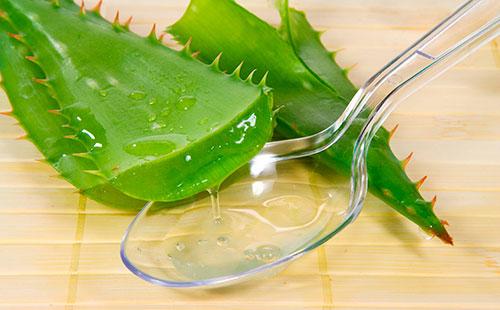
Alcohol tincture
For long-term storage, you can use aloe recipes for alcohol. In this form, the composition is stored for a long time and becomes a universal cure for many diseases.
- Squeeze the juice from the leaves of the agave.
- Pour vodka in equal proportions.
- Mix, pour into a dark glass dish.
Tincture of aloe on alcohol can be used to treat a sore throat. To do this, a tablespoon is dissolved in half a glass of water and gargle sore throat. It is also used to treat infected wounds by mixing with water. It is necessary to add one third of the water to the composition and wipe the surface of the wound with a cotton swab for its healing and antiseptic treatment.
This composition is used in gynecology: aloe in the form of an alcohol tincture diluted in water, irrigate the vaginal mucosa and cervix with erosion, colpitis.
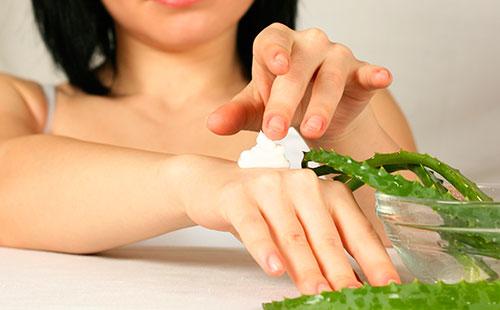
Filatov emulsion
For the treatment of skin lesions, including eczema, dermatitis, neurodermatitis, healing of hemorrhoidal cracks, an emulsion is made on the basis of a medicinal plant. It can also be used for the face - as an anti-inflammatory agent for rashes, acne, for hair in order to improve the scalp, increase the intensity of hair growth, reduce the severity of their loss.
Bioactive juice of a medicinal plant is used. To harvest it, you should know how to store aloe leaves.
- Cut large, fleshy sheets.
- Rinse with cool water.
- Wrap in a dark cotton cloth and refrigerate for 15 days.
- Cut the sheets, squeeze the juice.
- Add castor oil at the rate of 10 ml per 80 ml of juice.
- Add an emulsifier at the rate of 10 grams per 80 ml of juice.
- Mix, transfer to an orange glass jar. Store in the refrigerator at temperatures up to ten degrees.
As an emulsifier, lanolin, lecithin, emulsion wax and other organic substances can be used. The resulting ointment will become a universal remedy for the treatment of skin diseases, accompanied by the development of erosion processes, ulcers, atopic dermatitis. And the mucous membranes of the rectum, vagina, where the drug is administered on a cotton swab.
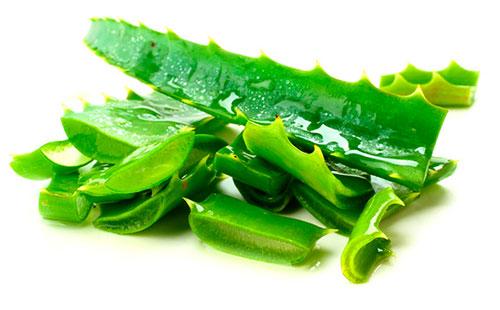
Infusion for bronchitis
For the treatment of acute and chronic bronchitis, a combined composition based on the agave is prepared.
- Squeeze out fresh juice, use one tablespoon.
- Add one hundred grams of soft butter.
- Mix with honey in a volume of one hundred grams.
- Add one hundred gram cocoa powder.
- Mix the ingredients, store the resulting mass in the refrigerator.
Take the medicine should be three times a day for a tablespoon, dissolving in a glass of well warm milk. Traditional medicine recommends it for the treatment of all acute respiratory diseases - bronchitis, tuberculosis.
Contraindications
You should limit the use of aloe in pregnancy, breastfeeding, heavy menstruation, cystitis and hemorrhoids. In these conditions, ingestion of funds based on a medicinal plant is excluded, since they increase blood flow to the pelvic organs.
Aloe contraindications do not apply to funds for external use. They are absolutely safe and can be used without restrictions.
Aloe medicinal plant is widely available. It is cultivated as a home plant and can be used to treat a number of diseases. Its high anti-inflammatory and wound healing properties make it indispensable in the treatment of skin diseases, mucous membranes. When ingestion, care should be taken to avoid prolonged use and not exceeding the recommended doses.
